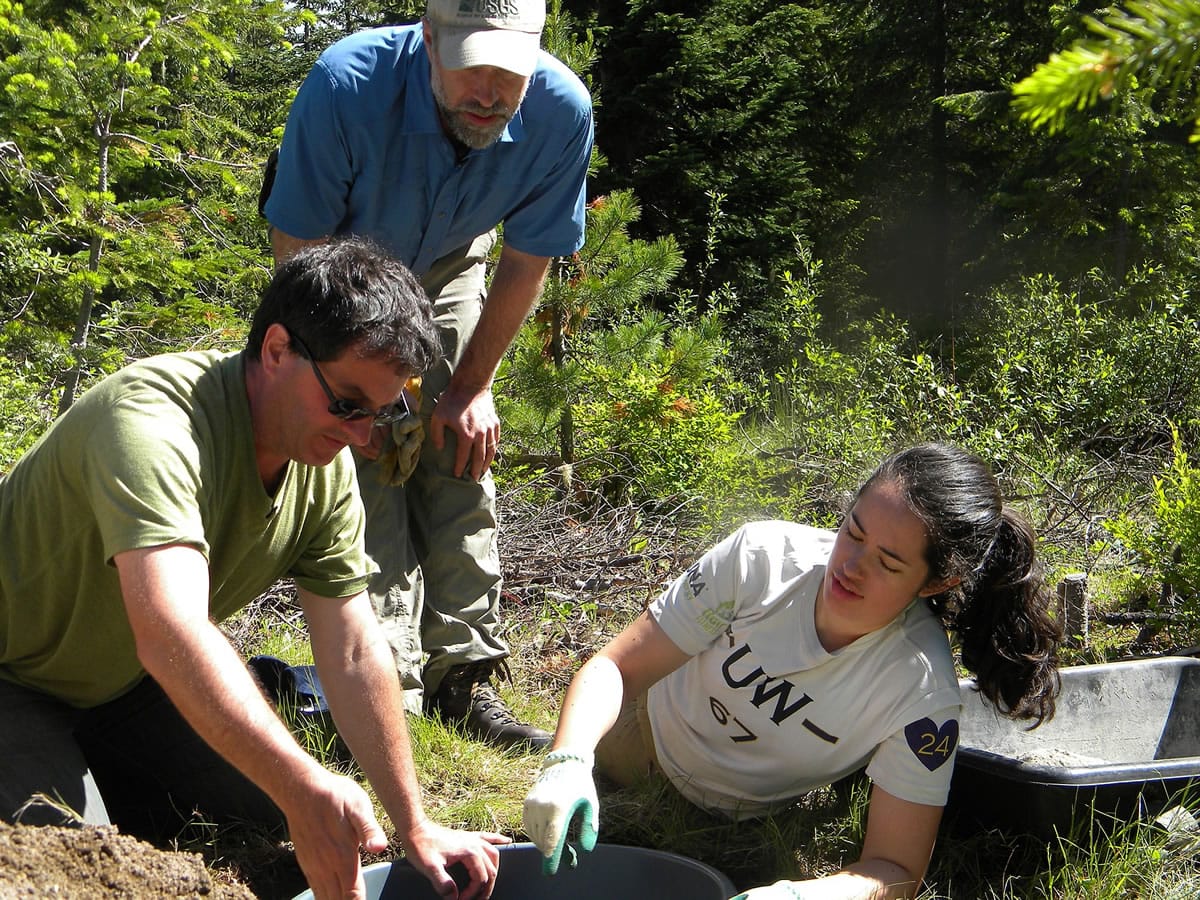For such monumental research, the Mount St. Helens magma project is rooted in awfully down-home stuff. They couldn’t start the world-class science until somebody bought a bunch of trash cans.
Big 44-gallon trash cans: the ones many Americans filled with chicken bones, corncobs, foam cups and red-white-and-blue paper plates over the July 4 weekend.
Kelley Hall is one of the people who spent the last couple of weeks filling them with seismometers.
A first-year graduate student at the University of Washington, Hall is part of IMUSH — Imaging Magma Under St. Helens. The project includes scientists from Northwest universities and the U.S. Geological Survey’s Cascades Volcano Observatory in Vancouver (see “Study of magma under Mount St. Helens underway,” June 23).
The college students have been doing the hands-on labor required to install seismic monitors around the volcano. Working under the supervision of such scientists as Cornell University’s Geoff Abers and Vancouver-based Seth Moran, it’s meant a lot of pick-and-shovel work.
A grad student’s duties also can fall into the pick-it-up category. While the National Science Foundation is funding the project, it wasn’t the NSF that went shopping for trash cans.
“We got them at Home Depot,” Hall said recently during a break from digging on the flank of the volcano. “We got 70 of them.”
That’s because there are 70 seismometer stations plotted around Mount St. Helens; every seismometer site needs a trash can, which is buried in the ground to serve as the monitor’s protective vault. Each site also needed a smaller kitchen-variety garbage can, a bag of ready-mix concrete, a bag of gravel, a small round concrete form, slabs of foam insulation, some wiring and a package of bolts and other hardware.
“We got 70 of everything,” Hall said.
If you’re wondering what it was like for other customers backed up behind them, that wasn’t a factor, Hall said: “They gave us our own checkout counter.”
Off Beat lets members of The Columbian news team step back from our newspaper beats to write the story behind the story, fill in the story or just tell a story.




